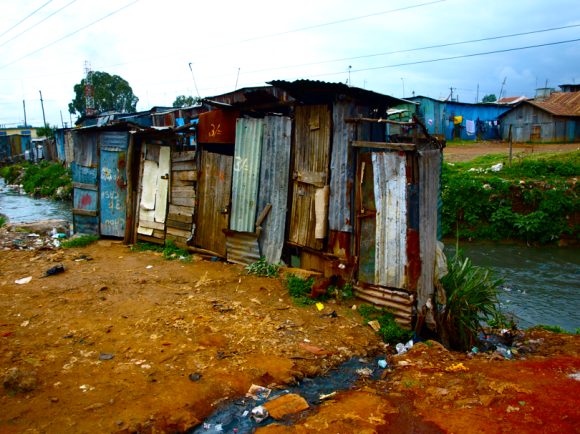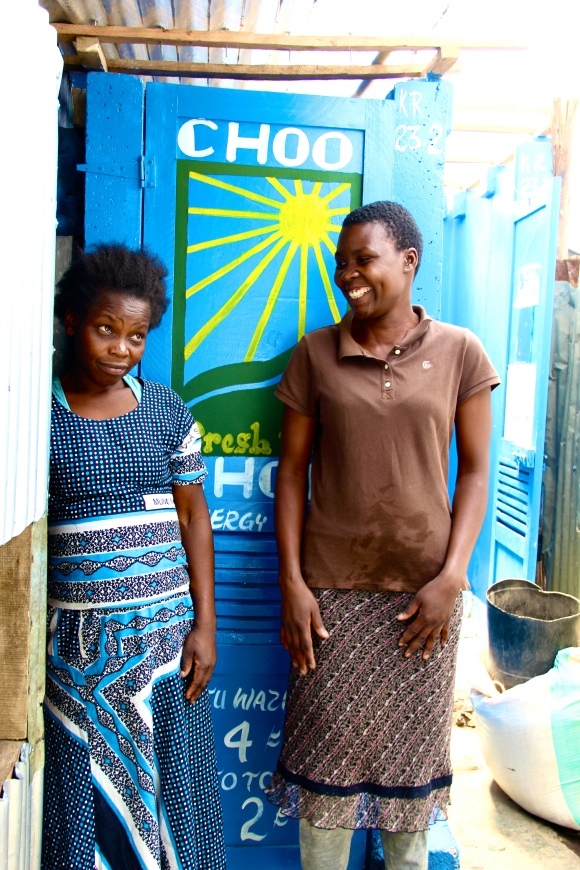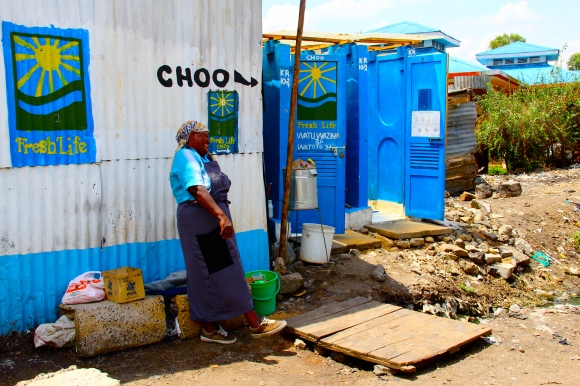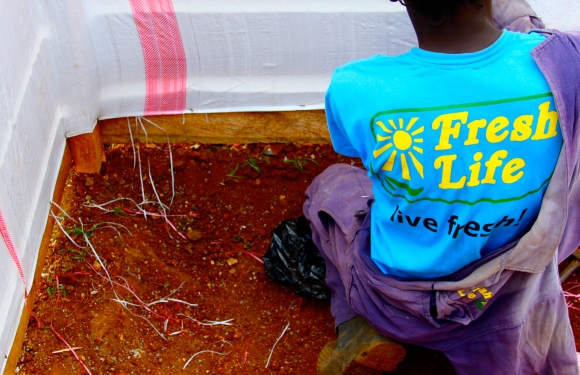
On my second day in Nairobi, I had dinner with family friends, during which a 9-year old boy jokingly told me not to forget my umbrella when traveling to Kibera. I looked at him confused and he said ‘flying toilets’. My roommates and I assumed ‘the flying toilet’ would be as enthralling as the name sounds. Simply put, it is a plastic bag used as a toilet which is then thrown on to the road.
About 10 million Kenyans live in slums, and this number is growing at a rate of 7% per year. About 80% of these residents lack adequate sanitation facilities. On average, 150 people share one toilet and 70% of slum residents are not connected to sewers. 90% of defecation is placed in water sources contributing to the contamination of water and the food supply.
The average toilet in the Mukuru slums (photo credit Marielle Schweickart)
Sanergy is building a network of low cost sanitation centers in the Mukuru slums, distributing them through a franchise of local entrepreneurs called Fresh Life Operators. Fresh Life Operators are able to make a profit by charging a small fee for the use of toilets. The waste is then collected and processed into fertilizer and electricity.
Meet some of the Fresh Life Operators
This is where the magic happens: compost is turned in to organic fertilizer
What stands out about Sanergy is
- local materials are used to build the toilets
- toilets are clean and environmentally friendly (no septic tanks)
- they are affordable, 5 Kenya shillings per use (.05 cents)
- children are often 30% of customers and charged 1 shilling!
- the support provided by the Sanergy team- opening ceremonies of toilets where the home is painted the blue colors of fresh life or a theatre group performs a skit showing how to use the toilet
- jobs are created through Sanergy in Mukuru where the unemployment rate is higher than 40%
- diarrheal disease is lessened in children
- the risk of rape is lowered for women trying to reach distant toilets at night by increasing the volume of toilets
The Kiva partnership with Sanergy allows local entrepreneurs without enough capital to purchase a toilet and pay back in monthly installments.
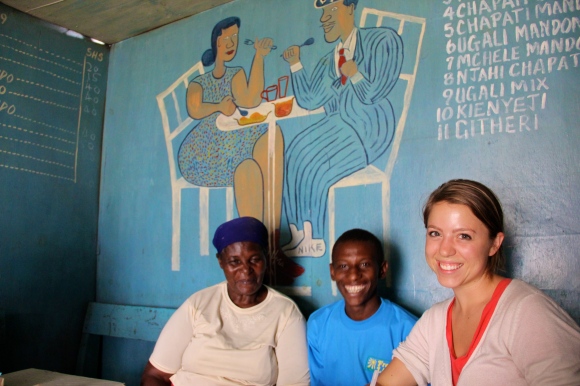
Our interview with Mary and her youngest son John for a Kiva loan with Marielle Schweickart
PREVIOUS ARTICLE
A tough day in the office? Microfinance at an inspirational organisation →NEXT ARTICLE
Kiva Hangout: Talking with Maharishi students funded with Kiva loans! →
